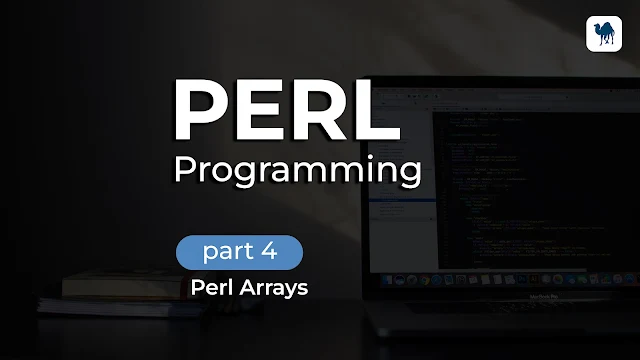Introduction
• An array is a specialized type of variable that stores data in the form of a list. It is an orderly collection of scalar values.
• Each element can be accessed by its unique index number. The index number starts from 0 and ends with the maximum declared size of the array.
• In a Perl array you can store numbers, string floating values etc.
• Arrays are defined using the @ sign and to refer to a single element of it, the variable name proceeds with the $ sign.
• The reason for using $ is that there is a solitary value in the array, which is a scalar. The reason for this is that the single element in there is a single value in the array and it is a scalar.
Syntax:
@fruits = {'mango',' apple', 'banana', 'orange'};
for example:
• Also array can be declared using qw .it stores data into an array considering a white space to be the delimiter.
Syntax:
@fruits = qw(orange apple mango banana);Perl array size or length
The size of an array is determined by the number of scalars on it. The size of the array must be one greater than the maximum index of the array. The maximum index can be obtained from $#array_name.
For example, if there is an array called fruits
@fruits = {'mango',' apple', 'banana', 'orange'};
maximum index of the fruits can be obtained from $#fruits
The scalar can be used to obtain the size or length of the array. The scalar is not a keyword but rather a built-in function.
scalar is ensured that the array is evaluated in the scalar context, and its size is returned instead of the list of elements.Syntax:
@fruits = {'mango',' apple', 'banana', 'orange'};
#Explicit scalar context
print("Size of the array: " . scalar@fruits);
#Implicit scalar context
$size = @fruits;
print("Size of the array: ". $size);
. is used for concatenation.
-----------------------------------------------------------------------------------
Perl Functions
Push on Array
Pop on Array
Syntax: @fruits = {'mango',' apple', 'banana', 'orange'}; pop @fruits ;
print("@fruits\n");
Output: mango apple banana
Shift on Array
Unshift on Array
The equalArray method stores parameter values of array references using @_. This is a specialty unique to Perl, not found in other programming languages. It then checks if the two given arrays are identical by comparing the length of both. If the arrays have different lengths, the method returns 0 as they cannot be identical.
If the length of both arrays is equal, we declare the hash %hash and use the hash slice @hash{@array1,@array2} to assign an empty list ( ) of multiple keys in the hash. This ensures that only unique elements are in the hash when we combine both arrays. Thus, only the unique elements in @array1 and @array2 references will be in the hash and assigned as the keys. Then the values of the associated keys will be undef.
When we call the method we should pass array references as the arguments.
In conclusion here we provided a complete guide to how arrays work in Perl programming. Let's explore more about perl programming in the next post. 🍏🐝


.png)
.png)
.png)
.png)
.png)

Awesome Article Thanks for sharing your valuable information, Are you looking for a
ReplyDeleteapp development company
mobile app development services
mobile app development services company
top mobile app development companies
mobile application development companies
Thanks for sharing this informative article about how much is important to have an android app for your business as we all know that android devices are in high demand it's very essential to Hire mobile application development company in india to take your buiness into the digital world and to reach your clients in an easy and secure way.
ReplyDeletemobile application development company in india
mobile app development agency india
mobile app development company in india
mobile app development india